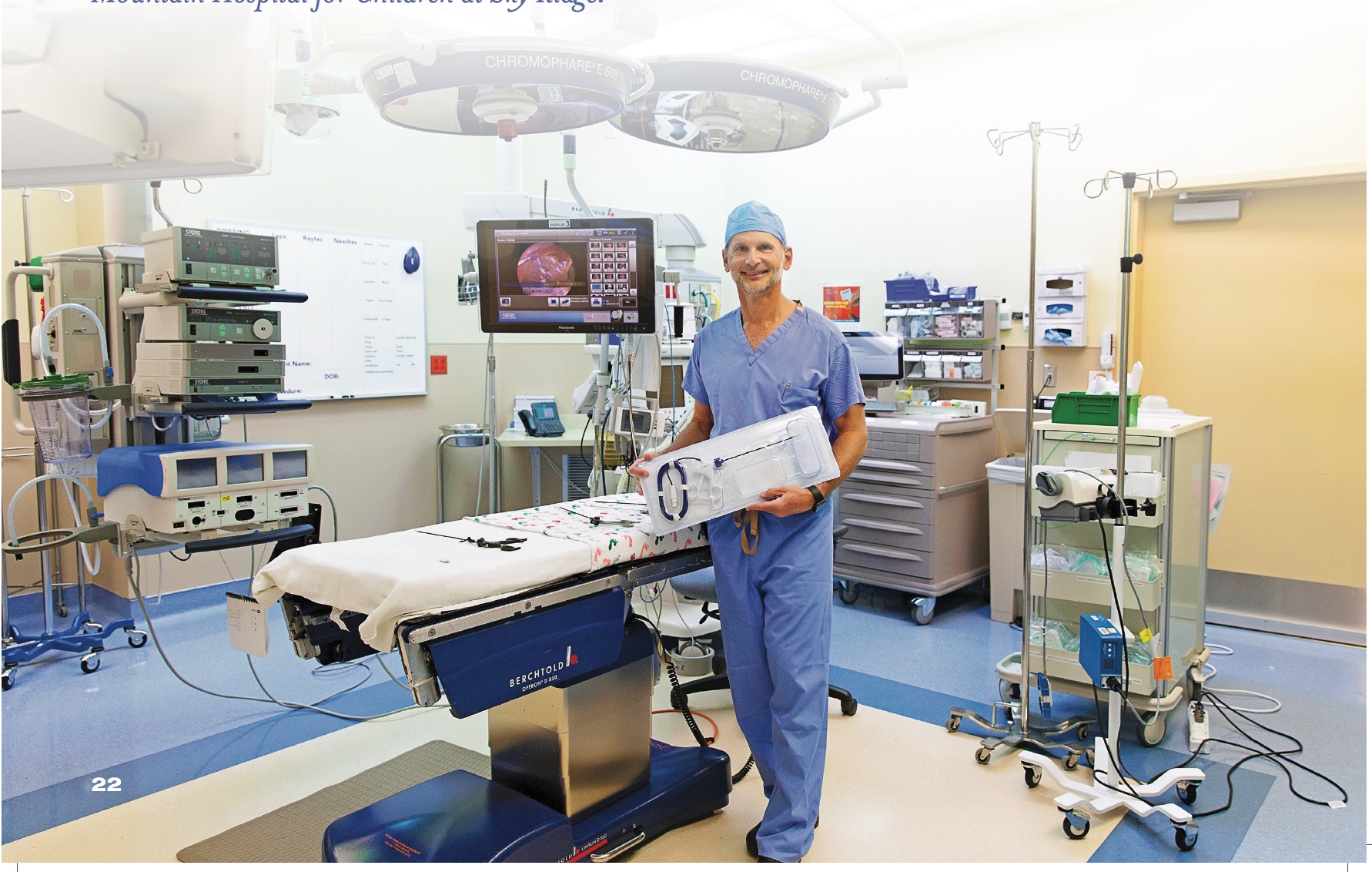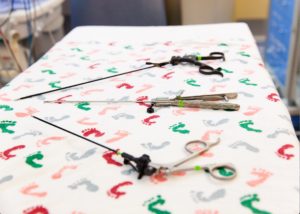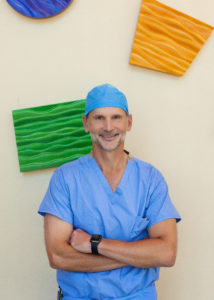Surgical Care for Little Patients | by

Pediatric Minimally Invasive Surgery Offers Big Benefits
When pediatric surgeon Dr. Steven Rothenberg performed his first minimally invasive surgery almost 30 years ago, the instruments he used in the operating room were often longer than his newborn patients. Since then, Dr. Rothenberg has devoted his career to perfecting minimally invasive surgical techniques that benefit infants and children. He co-founded a medical device company and partners with others to develop surgical instruments that work better on a child’s small anatomy.
Today, Dr. Rothenberg is internationally recognized for his pioneering efforts. He performs hundreds of minimally invasive surgeries every year at Rocky Mountain Hospital for Children at P/SL and Rocky Mountain Hospital for Children at Sky Ridge.
What is minimally invasive surgery?
Dr. Rothenberg: It’s a set of techniques that allow a surgeon to operate through very small incisions. It involves the use of a surgical telescope (a small tube with a camera) and specially-designed instruments. A surgeon also may use computers and high-resolution video cameras. Depending on the condition being treated, minimally invasive surgeries can be endoscopic (using a scope to see the digestive tract), laparoscopic (using a scope to see into the abdomen) or thoracoscopic (using a scope to see into the chest area).

Minimally invasive surgical instruments designed for pediatrics
What are the benefits to this type of surgery?
Dr. Rothenberg: Because the incisions are small, patients experience less pain and scarring. There’s also less risk of infection. In the past, kids who had surgeries to remove an appendix or gall bladder might stay in the hospital for up to a week. This is hard on the kid and the parents who miss work days. Plus, they’d have to live with a large scar for the rest of their lives. Sometimes, the scars from minimally invasive surgery are almost imperceptible.
Children who undergo minimally invasive surgery tend to bounce back more quickly. Many go home less than 24 hours after surgery. The smaller incisions also reduce the amount of scar tissue, adhesions, that form. For instance, children who undergo traditional open abdominal surgery have a higher chance of developing scar tissue that leads to a bowel obstruction later in life. Minimally invasive surgery virtually eliminates this risk.
Are there any risks to this type of surgery?
Dr. Rothenberg: This is still surgery, which means it carries the same risk as any surgical procedure. However, this risk of problems like bleeding, infection and scarring is greatly diminished thanks to the much smaller incisions.
What conditions are treated with minimally invasive surgery?
Dr. Rothenberg: There are too many to list! Some of the more common surgeries we perform include appendectomies, gall bladder removal and gastroesophageal procedures like Nissen fundoplication for reflux and asthma. We do more minimally invasive hernia repair surgeries than anyone else in the region. We also have the largest neonatal unit within an 8-state area. We perform more minimally invasive surgeries on infants than any other hospital in the world. We treat a lot of babies with congenital defects that affect the lungs, bowels and other abdominal organs.
Is every child a candidate for minimally invasive surgery?
Dr. Rothenberg: Occasionally, a child needs conventional surgery due to a quirk in anatomy or physiology. For the most part, pediatric minimally invasive surgery is our go-to method because it greatly improves a child’s immediate and long-term results. Our surgeons have special expertise in neonatal laparoscopic surgery for newborns. We operate on babies who weigh as little as two pounds.
Are there any challenges to performing this surgery?
Dr. Rothenberg: When I started in this medical field, I was among a handful of surgeons worldwide performing minimally invasive surgery on infants and children. Until 2010, adult-sized instruments were the only surgical devices available for use in pediatric procedures. The large instruments interfered with a surgeon’s ability to clearly see and access the surgical site. To address this issue, I worked with a well-known medical device company to develop smaller instruments. Unfortunately, they weren’t able to develop all of the tools because of low market demand. I co-founded a company to develop these devices.

Dr. Steven Rothenberg
What is your role in minimally invasive surgery?
Dr. Rothenberg: Pediatric surgeons from across the country and around the globe come here to observe and learn the surgical techniques that my colleagues and I have pioneered. Doctors Saundra Kay, Kristin Shipman and Sarah Lai, and myself work together to provide the latest techniques to other surgeons. With my skilled partners in Denver, I’m able travel worldwide to teach the techniques to other surgeons. I’m on staff as professor of clinical surgery at Columbia University. Every month, I travel to New York City to teach these techniques to attending physicians so they can pass along the knowledge to surgical trainees. I’ve been involved in many worldwide firsts involving minimally invasive procedures, including the first minimally invasive surgical repair of tracheoesophageal fistula and esophageal atresia in newborns. This is a serious condition where the esophagus and trachea don’t properly connect. It allows fluids to enter the airway and can interfere with breathing. We’re now the world leaders in using minimally invasive procedures to correct this problem.
Learn more: www.RockyMountainKidsSurgery.com.
{Did You Know?}
Tags: Minimally-invasive surgery
Comments
Leave a Comment
Please be respectful while leaving comments. All comments are subject to removal by the moderator.


Great article